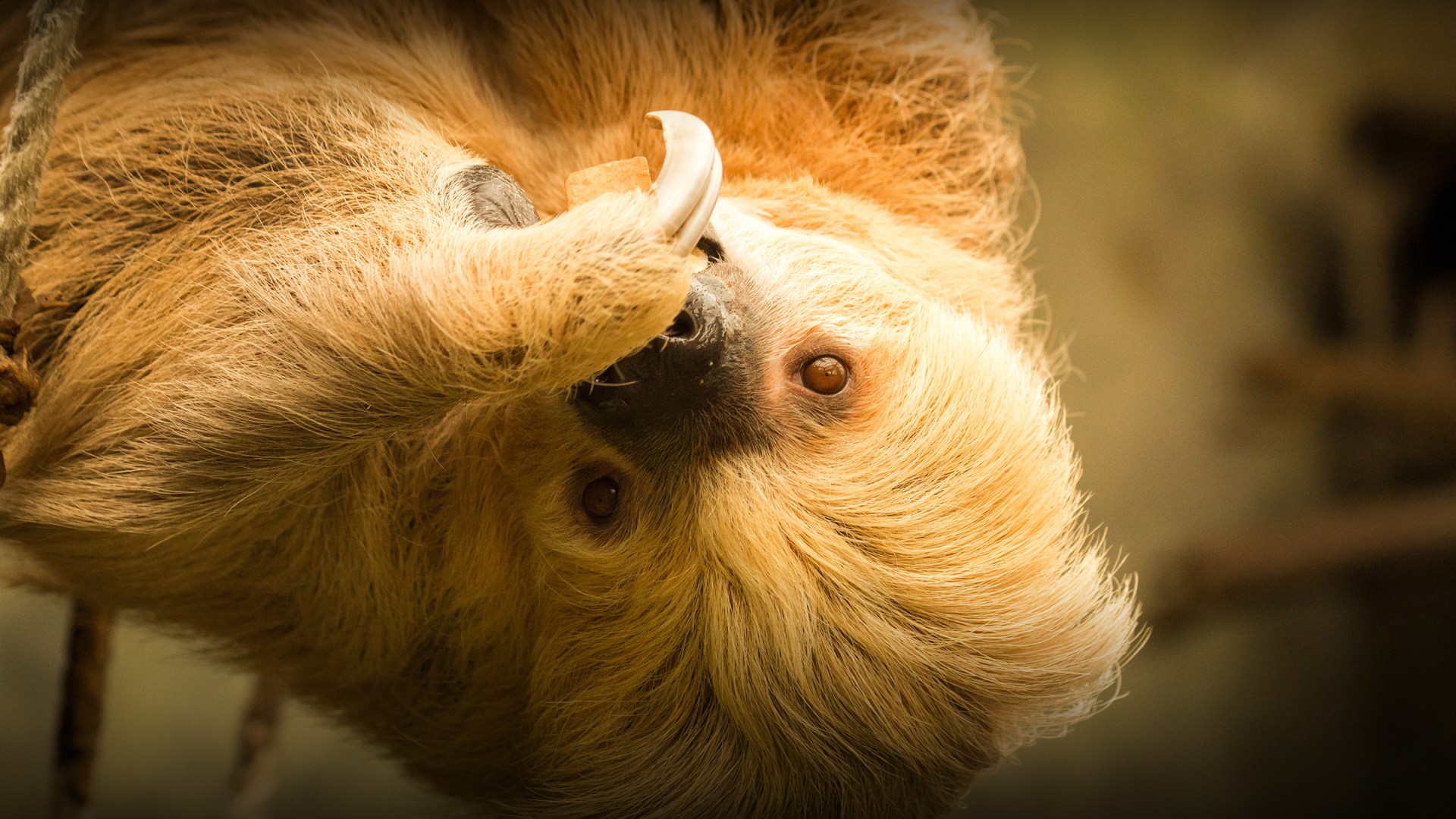At the National Zoo in Washington, D.C., there lives a two-toed sloth. Specifically, this sloth occupies a box in the Small Mammal House.
At least, that’s where the sloth has been every single time I have visited the zoo, and I have been five times over the past two years. Of course, the sloth does leave his box; friends sometimes send me cellphone photos and videos, capturing the sloth while he hangs from a tree branch or climbs around—but in spite of my best efforts, I’ve never seen him outside the box.
And after two years of trying, I don’t want to.
It’s hard to explain, but you have to start way, way back in time. Paleontologists have identified at least 23 different kinds and sizes of prehistoric sloths, but the most impressive of these is Megatherium. Its name stems from the Greek words mega [μέγας], meaning “great,” and therion [θηρίον], “beast”—and rightly so.
Megatherium was the size of a modern-day elephant, weighing up to six or seven metric tons. Standing on its hind legs, Megatherium could reach a height of more than 20 feet. It towered over most other mammals, except mammoths and mastodons.
Megatherium was indeed a great beast.
But not much is known about Megatherium and its North American counterpart, Megalonyx (from the Greek “great claw”). Paleontologists can’t even say exactly how these giant ground sloths went extinct—or how they’re related to today’s three- and two-toed tree dwellers that fit happily in a bucket.
But what we do know is that few animals—kittens, puppies, and maybe baby pandas—spark viral Internet delight the way baby sloths do. For many people, sloths are endearing in a “face-only-a-mother-could-love” sort of way, like a furry pig-monkey-hamster. When I look at sloths, I’m reminded just how exquisitely creative life can be.
After all, sloths are marvelously well adapted to the lives they lead. As arboreal browsers, they eat leaves, buds, and twigs almost exclusively. But as anyone who has tried to eat only iceberg lettuce for a week could tell you, greens aren’t particularly calorie dense; they don’t provide much energy. Humans as a species solved this problem by eating fats and starches for energy, but sloths developed the opposite solution: They just move slowly.
But even that is ingenious. Sloths have the slowest digestion rate and metabolism of any mammal, so a sloth might take days to process what other animals could digest in a matter of hours. Other herbivores, such as gorillas, have massive guts for digesting fibrous leaves quickly. Yet the sloth, which climbs along thin branches, has a slow-acting, multi-chambered stomach that breaks down the leaves. At any given time, the contents of a sloth’s stomach compose up to 50 percent of its body weight. A 150-lb person would need to have eaten 75 Chipotle burritos in order to say the same
Of the remaining half of a sloth’s body weight, only 25 percent is muscle—once again the lowest amongst all mammals. And this, too, is a feat of perfect anatomical engineering: For a sloth to move any faster than it does would waste the precious little energy it has.
And so it is that an animal that appears sluggish, languid, and even lazy as it moves through the trees is a meticulously designed, efficient living machine. How did it come to be that “sloth” equates to laziness?
The term “sloth” evolved from the Greek acedia [ἀκηδία], meaning the “absence of care.” In the Summa Theologiae, Thomas Aquinas called sloth a “sluggishness of the mind which neglects to begin good … [it] is evil in its effect, if it so oppresses man as to draw him away entirely from good deeds” (2,35, ad 1). He also says that sloth is “an oppressive sorrow … for spiritual good.”
In other words, “sloth” is subtler—and more dangerous—than the label of “laziness” we give it. “Sloth” is melancholy; it is the absence of joy in God and his creation. Unfettered and taken to its extreme, human sloth’s greatest danger is suicide.
It is both devastatingly sad and ironic, because sometimes sloths do kill themselves. It’s an accident, of course, but the fact remains. These accidental deaths occur when the sloth, covered in green algae, mistakes its own limb for a moss-covered tree branch while hanging upside down in the jungle canopy, 30 feet off of the ground.
…Oops.
Aside from this, human “sloth” is the opposite of what I see when I look at sloths. When they hang in a tree without moving and appear to sleep the day away, sloths are doing exactly what they were made to do.
I didn’t realize that until I became depressed.
Like many who suffer from depression, I berated myself for being so lazy. I knew I wasn’t helping my situation, but I felt powerless to do much more than pull myself out of bed, let alone put in the effort to change anything. I knew it wasn’t my purpose.
I dragged myself to the zoo one day and sat on the bench, willing the sloth to come out from his box. Either that, I thought, or I’d crawl in, too, and stay alone forever.
That’s the reminder I get when I visit the zoo these days: The sloth doesn’t have to pull himself out of the box, because that’s what he was made for. But I was made for more.
I still hope he’ll come out, but it’s okay when he doesn’t. Surrounded by monkeys, lemurs, and tiny humans banging on the glass, there is an animal fulfilling his chief purpose, which is—as far as I can tell—to be slow. And in its slowness, God said the sloth is very good.
Melissa Steffan is a web developer and writer living in Washington, D.C.










